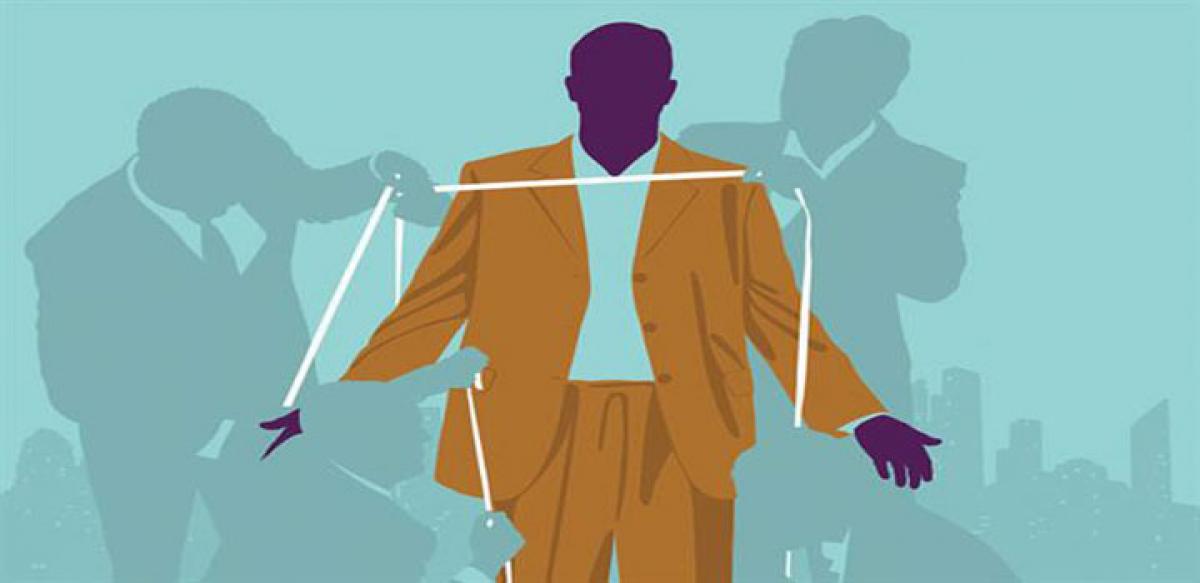Live
- Manage C&D waste better to fight air pollution: CSE
- Grassroots democracy, an idea whose time has come
- Bejan Daruwalla’s horoscope
- THE ‘DIVI SEEMA GANDHI’
- BJP cadre told to be part of development agenda
- Hina Khan goes snorkeling in Maldives: The ocean humbles me
- Living to Dance
- MyVoice: Views of our readers 17th November 2024
- Congress dares Kishan to bathe in Musi
- Kishan launches Musi Nidra programme
Just In

Every morning, I get my daily fix of caffeine at the same place. It’s a simple café a few blocks from my campus office. They make the best cappuccino in town. But I don’t show up here every day just for the quality of the coffee. Rather, it’s the quality of their customer service that earns my loyalty.
Budding entrepreneurs can borrow a tip or two on the value that personalised gestures have on consumers
Every morning, I get my daily fix of caffeine at the same place. It’s a simple café a few blocks from my campus office. They make the best cappuccino in town. But I don’t show up here every day just for the quality of the coffee. Rather, it’s the quality of their customer service that earns my loyalty.
It begins before I walk in the door: the baristas recognise my car, so as soon as I pull up they start pulling my shot. They also know that I prefer my cappuccino in their old white mugs, which are only five ounces. (The new mugs are eight ounces—too much foam)Last, they let me order half of a croissant——the owner eats the other half-——which is good for my diet.
It’s seven in the morning and I’m still half asleep. But I already feel a little special. Not a bad way to start the day. This is a mundane example of personalised customer service: the baristas know what I like and cater to my particular preferences.
You probably have your own examples, whether it’s a clerk at the dry cleaner’s who remembers how you want your shirt collars, or a sales-person at your favourite clothing store who gives you a call whenever they get your favorite jeans in stock. It’s hard to resist such service, which is why even big companies, such as Starbucks and Burger King, promote their own attempts at personalisation.
(Starbucks encourages customers to create their own "signature" drinks, while Burger King urges people to "Be Your Way.") In a world of automated everything, there’s something extremely gratifying about getting a little one-on-one attention.
In recent years, scientists have begun to measure the benefits of personalised service, both for customers and for those serving the customers. Consider this experiment, which was conducted at a restaurant in Ithaca, New York. The team of scientists, led by David Strohmetz at Monmouth University, wanted to understand the variables that influence the size of a tip.
They began by having the staff offer "each person in the dining party a fancy, foil wrapped piece of chocolate" when delivering the check. As expected, the strategy proved reasonably effective: when each customer was given a single candy, the average tip increased by about two percentage points.
However, the psychologists soon discovered a far more powerful approach. After offering the customers the same selection of chocolate bars, the waiters were instructed to turn and leave, as if they were moving on to a new table. But then, after a few steps, they suddenly turned back around, looked the customer directly in the eye, and said that he or she had been such a good guest that one chocolate bar wasn’t enough. The customers were then offered a second bar.
The results were dramatic. The lesson, say the scientists, is clear: personalised gestures can increase tip size, regardless of "the actual quality of the service provided during the party’s dining experience." Why is personalisation so effective? One of the main reasons is that it makes us more attentive, increasing our awareness of that free chocolate bar.
In a world saturated with generic content, personalised gestures find a way to cut through the clutter. We notice information and actions when they’ve been designed just for us.
(By Shlomo Benartzi with Jonah Lehrer, as published in ‘The Smarter Screen – What your business can learn from the way consumers think online’)

© 2024 Hyderabad Media House Limited/The Hans India. All rights reserved. Powered by hocalwire.com







